Category: ARTISTS
ARTISTS
George Grosz was a German artist known especially for his caricatural drawings and paintings of Berlin life in the 1920s. He was a prominent member of the Berlin Dada and New Objectivity group during the Weimar Republic.
His drawings and paintings from the Weimar era sharply criticise what Grosz viewed as the decay of German society. He emigrated to the United States to teach art in 1933, and became a naturalised citizen in 1938. He thus avoided Nazi persecution when his work was deemed “degenerate.” His later style changed sharply due to his loss of faith in humanity, shifting from political propaganda to romantic landscapes and caricatures of the inhabitants of New York City. The traumatic WWI experiences that drove George Grosz to rally against war, corruption, and what he saw as an immoral society created a particularly affecting artistic legacy. As a symbol of the revolution in Germany, his art was instrumental in awakening the general public to the reality of government oppression. Grosz synthesised two distinct and long-standing traditions within German art history to create his unique style. Combining the linear quality of the historic graphic tradition with German Gothic art’s penchant for brutally grotesque imagery, Grosz utilised these traditional modes to add further emphasis to his contemporary moral perspective.
Grosz exhibited regularly and taught for many years at the Art Students League of New York. In 1956 he returned to Berlin where he died in 1959.
Exhibitions(Selection)
2019
“Menschenbilder – Ernst Barlach | Otto Dix | George Grosz | Samuel Jessurun de Mesquita – Arbeiten auf Papier”, Kunsthaus Kaufbeuren, Germany
2018
“George Grosz in Berlin” , Bröhan-Museum – Landesmuseum für Jugendstil, Art Deco und Funktionalismus, Berlin, Germany
2016
“Der große Zeitvertreib”, Museum Kunstpalast, Düsseldorf, Germany
2014
“Grosz. Krieg Grotesk – Zwischen Expressionismus und Neuer Sachlichkeit”,2011
“Deutschland ein Wintermärchen”, Max-Ernst-Museum, Brühl, Germany
2010
“George Grosz. Korrekt und anarchisch”, Akademie der Künste, Berlin, Germany

Jonas Wood (*1977)
Contemporary American artist Jonas Wood (*1977) works with painting,
drawing and printmaking. Wood’s brightly coloured compositions often
consist of detailed still life and domestic scenes. His paintings are
influenced by his experimentation and work in other media –
particularly collage – and he skillfully layers flat forms to create a
sense of depth and perspective in his images.
The artist draws on art historical references as well as on the
interior settings, objects and people in his daily life. He was born
in Boston, and was deeply influenced by the art that surrounded him
during his childhood, as his grandfather possessed a significant
collection of works by artists such as Francis Bacon, Alexander Calder
and Andy Warhol.
After receiving a Bachelor’s degree in psychology and art from Hobart
and William Smith Colleges, Wood received an MFA in painting and
drawing from the University of Washington, Seattle.
Jonas Wood’s work has been exhibited internationally and can be found
in the collections of the Hammer Museum, the Museum of Contemporary
Art Chicago, the Museum of Modern Art, and the Whitney Museum of
American Art, among other notable institutions. The artist lives and
works in Los Angeles, where he shares a studio with his wife, artist
and ceramicist Shio Kusaka.

Louis Alphonse Poitevin (1819-1882)
Louis Alphonse Poitevin was born in the small town of Conflans-sur-Anille, halfway between Paris and Nantes, on August 30, 1819. After graduating from school in 1838, he moved to Paris to study chemistry at the École Centrale des Arts et Manufacture. In 1839, the discovery of the daguerreotype was announced at the Académie des sciences, and Poitevin became immediately hooked on photography. He purchased a camera and the necessary utensils for this new art and began making daguerreotypes in his free time.
Poitevin left the École Centrale just as France was entering the era of industrialisation, and from 1844 on he was quickly able to find employment as a chemical engineer. Over the next 30 years, he worked in salt and copper mines and glassware factories all over France and even in Algeria. At these locations, and in bouts between assignments, he dedicated his spare time to the study and invention of new photographic processes, in a constant quest for improving working practices and achieving successful results, an approach he also applied to his professional engineering tasks. He was extremely versatile in his projects, inventing both photomechanical and photochemical processes. The former include early methods of converting daguerreotype images into printing matrixes, the first successful photolithographic process, and explorations into the fundamentals of the later invented collotype. The latter combined both positives and negatives, on paper, glass, and even ceramics.
With his photolithographic technique of 1855, Poitevin won the much sought after Grand prix du Duc de Luynes in 1867, a contest run by the Societé française de photographie designed to stimulate research into developing a photomechanical process for the photographic illustration of publications. He also won a number of prizes for his non-silver photographic techniques, including a gold medal at the International Exposition in Paris in 1878. He held five patents, and his book “Traité des impressions photographiques” was published twice: the first edition in 1862 and a posthumous second edition in 1883. He published over 80 technical articles in professional journals of photography and printing. Poitevin died on March 4, 1882, in the village of his birth, leaving behind his wife Sophie (née Pequegnot), whom he had married in 1865.
Text by: Martin Jürgens, 2021
See recent publication “Louis Alphonse Poitevin”

Auguste (1862-1954) and Louis (1864-1948) Lumière
The Lumière Autochrome, invented by Auguste (1862-1954) and Louis (1864-1948) Lumière, was the first practical and commercially viable process of color photography. After ten years of research and experimentation, the Lumière firm introduced the first Autochrome plate to the world in 1907. The Brothers Lumière were also the inventors of the Cinémathographe, patented on February 13, 1895. France’s first public film screening, in front of a paying audience, took place on December 28 of the same year.
Alfred Stieglitz (1864-1946)
Alfred Stieglitz (1864-1946) was more than just a photographer: an enormously influential gallerist, he introduced the European avant-garde and their works to the world of contemporary American art. In 1903 he founded the annual magazine Camera Work, which contained critiques and reproductions of avant-garde artists alongside photographs. Matisse, Cézanne, Rodin, and Braque, among others, all exhibited at Galerie 291, founded by Stieglitz and Edward Steichen in 1905.
Ellis Kelsey (1866-1939)
Ellis Kelsey (1866-1939), who had been moonlighting as a photographer since 1889, turned to the Lumière Autochrome as soon as it was released, in 1907. By 1908 he was already able to show eight pieces, his first color photographic work, in exhibition at the Royal Photographic Society in London.
Samuel Gottscho (1875-1971)
The photographs of Samuel Gottscho (1875-1971) expose a particular fondness for architecture, landscape, nature, and countryside living. Despite dabbling in the art since 1896, it was only at the age of fifty that his hobby became a career. His photographs appeared in the pages – and even graced the covers – of American Architect and Architecture, Architectural Record, The New York Times, not to mention numerous home decoration magazines.

Georg Koppmann (1842-1909)
In addition owning a photography business in Hamburg, Georg Koppmann made a name for himself through his work as a photographer in his own right, and especially for the photographs he made of architecture and cityscapes throughout Germany. On behalf of the Hamburgische Baudeputation (Hamburg Building Deputation), he photographically documented the streets and buildings that would have to be cleared for the construction of Speicherstadt from 1883. This work was published in the portfolios “Hamburg 1883 ‘Ansichten aus dem niederzulegenden Stadttheil'”, with 35 albumen prints, and “Hamburg 1884 ‘Ansichten aus dem niederzulegenden Stadttheil'”, consisting of 36 albumen prints.

Rudolph Brandt (1910-1982)
Rudolph Brandt was born on December 4, 1910 in a small Jewish village called Vereski, in the countryside outside of Prague. He was the oldest of five children. He was born Yosef Goldberger, into a prominent rabbinic family. His paternal grandfather, was a renown rabbi, a tzadik. People would come from all across Europe to consult with him, resolve legal disputes, and seek his blessing. His father, also a rabbi, served as a chaplain in the Austro-Hungarian army. His maternal grandfather was a prosperous merchant. He owned a general store which also served as the Royal Hungarian, and later, the Czech custom house. Yosef grew up speaking Hungarian, Czech, and Yiddish. He was fluent in all three languages. He also studied Hebrew as it was assumed that he would follow in the tradition of his family and become a rabbi. As a child, he studied the Hebrew Bible, the Talmud and the teachings of the rabbinic commentators.
Yosef also studied in the gymnasium, where he learned French and German. By 1929,he had left his family home and traveled across Europe, working as a tour guide and translator. Unable to receive a Czech passport without first serving in the Army and following an intention to shed his Jewish identity, in a small cafe near Metro Saint Paul in Paris, Yosef bought a German passport and an identity card. On that day, with the exchange of 300 francs, Rudolph Brandt was born. In 1931, Rudolph traveled from London to Tampico, Mexico. The boat, which carried him to Mexico was designed to carry freight and 30 passengers. It was packed with over 250 Jews from across Europe. The passage took 30 days.
In Mexico, Rudolph taught himself Spanish and became a salesman, traveling throughout the Mexican interior selling shoes, dresses, toothpaste and brushes. After a year, he settled in Mexico City and became a liquor merchant. Throughout his childhood, the United States had a great lure for Rudolph. He heard stories of the great opportunities in America. In late 1932, he illegally crossed into the United States from Laredo, Mexico. He traveled around the United States, living briefly in New York, Los Angeles, and Oklahoma City. Over the next years, an adventurous and restless Brandt, left the United States and traveled through Mexico, South America, and Europe. In 1937, Brandt found himself in Shanghai, where he witnessed the first Sino-Japanese incident. It was in Shanghai that Brandt established himself as a photo-journalist and was hired by United Press International (UPI) to produce a pictorial report of the Sino-Japanese War. There he befriended the Far East Manager of the UPI, John R. Morris, and worked for him for two years, covering the bombings in Shanghai and traveling north toward Peking to photograph the army of General Mao Tse-tung. Next Brandt traveled to Nanking to photograph what became known as “the rape of Nanking” and then returned to Shanghai via Canton. From Shanghai, he traveled to Singapore, where he photographed for “The Straight Times Annual”, and then to Manila, where he pursued advertising and commercial photography. In the early 1940’s, Brandt returned to the United States. He settled in Berkeley, California and landed a job as a photographer with the San Francisco Examiner, working for the manager of the city desk, Josh Eppinger.
With the outbreak of World War 2 on December 7, 1941, Brandt was arrested as a suspected spy and interred for a time at Terminal Island and McNeil Island, where he was detained with Japanese Americans. In 1943, cleared of all charges, Brandt volunteered to serve in the United States Armed Forces. He was assigned to the Army Air Corp and was dispatched to the Pacific theater of operations, where he photographed Japanese naval activities. Brandt completed his military service in 1946 and landed a position in the training section of the United States Veteran’s Administration. Through this work, he became interested in psychology and enrolled in the University of Southern California where he received a Master’s in Psychology. Brandt received a Doctor in Psychology from the University of Ottawa and subsequently studied under Oscar Phister in Switzerland and became a Psychoanalyst. He returned to Los Angeles where he established a successful private practice. Throughout the 1960s and 70s, Brandt was active in psychoanalytic circles. A fellow in numerous professional societies, he directed the Melrose School for Emotionally Disturbed Children, stared in a weekly television show, Dr. Brandt’s Cable Couch, served as a member of the State of California Board of Medical Examiners and as visiting Professor at the University of California. Brandt volunteered for numerous civic organizations.
Though his professional career as a photographer ended with the close of World War 2, he continued to take photographs throughout his life, and maintained a color darkroom in his home in Los Angeles.
Rudolph Brandt was married to Suzanne Brandt, and had two children. He died on January 27, 1982 at the age of 72 . Rudolph is survived by his two children and four grandchildren, including his namesake, granddaughter Rudy Brandt.
See our publication “1937 Japan Attacks China!”

Yoshito Matsushige
Yoshito Matsushige (1913-2005) was born in Kure, Hiroshima. As a photojournalist, he took five photographs on August 6, 1945, the day of the atomic bombing of Hiroshima. At the time of the explosion, Matsushige was at home, 2.7 km south of the hypocentre. He is the only person to have captured an immediate, first-hand photographic account of the bombing. Matsushige dedicated most of the rest of his life to organizing and preserving the photographic history of the atomic bombing of his hometown.
Hiromichi Matsuda
Hiromichi Matsuda (1900-1969) was working as a photographic technician at Kawanami Shipyard when the “Fat Man” atomic bomb hit Nagasaki on August 9, 1945. He took photographs of the mushroom cloud from the rooftop of the shipyard office and from ground level outside about ten minutes after the bombing.
Torahiko Ogawa
Torahiko Ogawa (1890-1960) was born in Tsukihi, Tokyo. After graduating from the Tokyo Photography Academy, he opened a studio in Nagasaki. At the request of the Nagasaki Prefecture, he photographed the devastated city between August 20 and September 30, 1945, and again in June 1946.
Yosuke Yamahata
Yosuke Yamahata (1917-1966) worked for the Japanese News and Information Bureau. The day after Nagasaki was destroyed by the atomic bomb, he was assigned to the Bureau’s Army division and sent to the city to document the fallout. Only a few photographs were published before a press ban was imposed. After the ban was lifted in 1952, Yamahata published his photographs in Atomized Nagasaki: The Bombing of Nagasaki – A Photographic Record.
See our publication “X-Ray Japan 1945”

Karl-Heinz Schwind(*1958 in Landau)
From the catalogue of the first exhibition by Daniel Blau, Munich 1990: “Images enlarge the space, expand it – form tunnels into other worlds, make the room a Charles de Gaulle departure hall”
Karl-Heinz Schwind studied under Georg Baselitz from 1978-84 and was a master student of Per Kirkeby at the Karlsruhe Art Academy from 1984-85.
His colourful, strong works, some of which border on material battles, contain numerous quotes from art history.
Schwind tries it out – that’s his style. His works show the political and cultural tensions of West Germany in the 80s.
To question himself and society – this is what Schwind has been working on in his painting to this day. He is not afraid of references, thematically he incorporates Ludwig Kirchner into his works, just as quotes of Dadaism and technical transformation of Tachism.
He follows an inspiration almost archaically, anarchically and creates work out of what falls into his hands: wood, magazines, wax crayons, canvas, yarn.
Schwind lives and works in Berlin.

Billy Al Bengston (*1934 in Dodge City, Kansas)
is an American artist and sculptor. Bengston’s fondness for motorcycles influences his artworks, which often consist of vibrant lacquer on metal.
He also works on paper and canvas. Besides motorcycle culture, surfing and his life in California and Hawaii give the artist’s works their character.
In 1955 he went to California College of Arts in Oakland followed by studies at Otis Art Institute in LA. Since 1958 there have been various solo exhibitions in LA with Ferus Gallery. His first solo museum exhibition was in 1968 at LACMA. The 1960s were shaped by professional motorcycle racing. In 1974 he visited Hawaii for the first time.
Bengston surfs and paints in Venice Beach and Honolulu.
Exhibitions and Distinctions (Selection)
2018
“Endless Summer”, Museum of Contemporary Art Chicago, USA
2017
“California Dreaming: Ed Moses, Billy Al Bengston, Ed Ruscha”, New Britain Museum of American Art, USA
2016
“Still Life with Fish: Photography from the Collection”, Hammer Museum, Los Angeles, USA “Los Angeles, – a Fiction”, Astrup Fearnley Museet, Oslo, Norway
2015
“Drawing in L.A.: The 1960s and 70s”, Los Angeles County Museum of Art, USA
2014
“Selections from the Permanent Collection”, Museum of Contemporary Art, Los Angeles, USA
2013
“Craig Turned On The Light and California Art Bloomed”, Honolulu Museum of Art, Hawaii.
2012
“Sinister Pop”, Whitney Museum of American Art, New York, USA

Sigmar Polke was an influential German artist known for his distinctive paintings and photographs. He often worked with non-traditional artistic materials and experimented with a wide variety of styles and subjects. He was born in Poland during World War II. After the war, his family was expelled to East Germany where the artist spent his early years until his move to West Germany in 1953.
Polke studied at the Kunstakademie Düsseldorf where he co-founded the movement now known as Capitalist Realism with fellow artists Gerhard Richter and Konrad Lueg. The artists depicted and critiqued the growing consumerism of West Germany, drawing on Pop Art and media influences. The group organised the notable 1963 art exhibition Demonstration for Capitalist Realism.
By the end of the 1960s, Polke had solo exhibitions at numerous galleries including Galerie René Block, Berlin; Galerie Schmela, Düsseldorf; Galerie Heiner Friedrich, Munich; and Galerie Rudolf Zwirner, Cologne.
He participated in numerous international biennales and exhibitions including Documenta, the Bienal de São Paulo, and the Venice Biennale, and received a number of awards, including the Golden Lion for his solo presentation at the West German Pavilion in 1986 at the Venice Biennale.
Polke worked predominantly with photography in the 1970s and returned to working with paint in the 1980s, making abstract works that drew on chance reactions between materials. In the last two decades of his life, he produced paintings focused on historical events. He died on June 10, 2010 in Cologne, Germany at the age of 69.
His works are held in the permanent collections of major international museums including the Art Institute of Chicago; The Broad, Los Angeles; Centre Georges Pompidou – Musée National d‘Art Moderne, Paris; Guggenheim Museum Bilbao; Hirshhorn Museum and Sculpture Garden, Smithsonian Institution, Washington, DC; The J. Paul Getty Museum, Los Angeles; The Metropolitan Museum of Art, New York; Museum für Moderne Kunst, Frankfurt; The Museum of Modern Art, New York; National Gallery of Art, Washington, DC; National Museum of Art, Osaka, Japan; Stedelijk Museum Amsterdam; and Tate Modern, London, among others.
Selected Exhibitions
2022
Sigmar Polke. Dualismen, March 5, 2022 – June 12, 2022, Städtische Galerie Karlsruhe, Karlsruhe, Germany
2021
Sigmar Polke – Produktive Bildstörung, Nov 13, 2021 – March 6, 2022, Kunsthalle Düsseldorf, Düsseldorf, Germany
2017
Sigmar Polke – Alchemie und Arabeske, Feb 11 – May 21, Museum Frieder Burda, Baden-Baden
2016
Sigmar Polke. Early Prints, Mar 20 – May 22, Städel Museum, Frankfurt am Main, Germany
2015
Alibis: Sigmar Polke, 1963–2010, Oct 09, 2014 – Feb 08, 2015, Tate Modern, London, UK
2014
Alibis: Sigmar Polke, 1963–2010, Apr 19 – Aug 03, The Museum of Modern Art, New York, USA
2014
Sigmar Polke. La démultiplication de l’humour. Les éditions dans la collection Axel Ciesielski, les Abattoirs, Jan 31–May 04, Museum of Modern and Contemporary Art – FRAC Midi Pyrénées, Toulouse, France
2008
Sigmar Polke. Photographische Arbeiten aus der Sammlung Garnatz, May 15 – Aug 31, Die Photographische Sammlung/SK Stiftung Kultur, Cologne, Germany
2007
Sigmar Polke. Eine Retrospektive 1963–2005. Die Sammlungen: Frieder Burda, Josef Froehlich, Reiner Speck, Jun 22 – Oct 07, Museum Moderner Kunst Stiftung Ludwig Wien, Vienna, Austria
2005
Sigmar Polke. Alice in Wonderland, Oct 1- Oct 30, Ueno Royal Museum, Tokio, Japan
2003
Sigmar Polke. Recent Paintings and Drawings, 1998–2002, Nov 15, 2002 – Apr 06, 2003,
Dallas Museum of Art, Dallas, USA
2001
Sigmar Polke et la Révolution Française, June 29 – Sept 24, Musée de la Révolution Française, Vizille, France
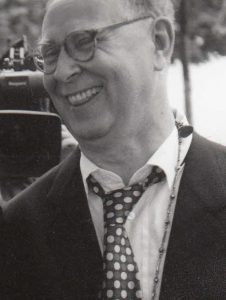















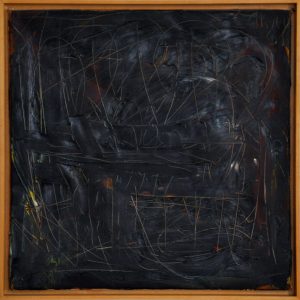

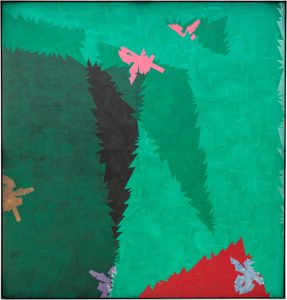

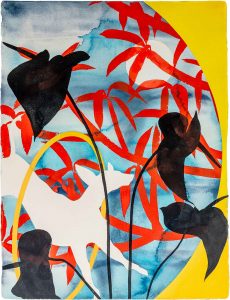
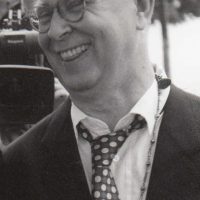
 +49 89 29 73 42
+49 89 29 73 42